|
The Question: What Features Would a Green Fireplace Have?
1) Clean-burning 2) Energy Efficient 3) Integrated Ventilation 4) Durability 5) Thermal Mass 6) Radiant Heat 7) Renewable Fuel Current Green Fireplace Rules There is very little in the Green literature on fireplaces - most of it negative. There seems to be some underlying assumption that fireplaces are dirty and inefficient and, if we must indulge the irrationality of those who love fireplaces, at least we can try to isolate the fireplaces and keep them from interferring with the rest of the modern features in a green house. Some would say the concept of a "green fireplace" is oxymoronic. The emerging National Green Building Standard mostly views fireplaces negatively, requiring new masonry fireplaces to "have gasketed doors, outside combustion air, and a chimney top damper" and awarding up to 7 points for removing fireplaces altogether in renovations.* LEED has some comments about fireplaces under "combustion venting" in the LEED for Homes program. They seem to be mostly concerned about smoking fireplaces and indoor air quality. LEED also recently added a preferred "install no fireplace" option. Googling "green fireplaces" gets a lot of ads about gas and electric fireplaces and some dire predictions about outlawing all wood-burning. In an article about "green stoves" in Hearth Marketing James E. Houck and David R. Broderick interview EPA regulators. Every one seemed to say it was "too early to tell" but went on to advocate the cleanest and most efficient stoves and urged the manufacturers of other wood-burning appliances (but didn't mention fireplaces) to contact EPA about the EPA's "Green Label program". Future of Green Fireplace Rules In a positive note, fireplaces are still permitted according to LEED and National Green Building Standard guidelines, but it may be a struggle to get any "points" for including a fireplace. "Green fireplaces" will have to be clean-burning and efficient. They also may have to be provided with combustion/ventilation air and sealed off with tight-fitting doors and dampers. The fireplace doors, of course, would block most of the radiant heat but the tight-fitting dampers andcombustion/ventilation air sound good if accomplished in conjunction with the LEED recommended whole house perspective on ventilation. With a passing familiarity with the LEED program and our masonry industry efforts to emphasize our strengths, I would add durability and thermal mass. Locating the chimney mass inside the exterior walls of the house and exposing the masonry chimney walls to take advantage of all that thermal mass could be worth points. By knowing how fireplaces heat I would add the advantages of radiant heat and the use of wood as a renewable fuel. All material on Green Fireplaces is by permission of Jim Buckley and the Buckley Rumford Company
9 Comments
Chimney Fires As you snuggle in front of a cozy fire or bask in the warmth of your wood stove, the last thing you are likely to be thinking about is the condition of your chimney. However, if you don't give some thought to it before you light those winter fires, your enjoyment may be very short-lived. Why? Dirty chimneys can cause chimney fires, which damage structures, destroy homes and injure or kill people. Chimney fires can burn explosively - noisy and dramatic enough to be detected by neighbors or passersby. Flames or dense smoke may shoot from the top of the chimney. Homeowners report being startled by a low rumbling sound that reminds them of a freight train or a low flying air plane. However, those are only the chimney fires you know about. Slow-burning chimney fires don't get enough air or have enough fuel to be as dramatic or visible. But, the temperatures they reach are very high and can cause as much damage to the chimney structure - and nearby combustible parts of the house - as a fast, explosive fire. With proper chimney system care, chimney fires are entirely preventable. Creosote & chimney fires: what you must know: Fireplaces and wood stoves are designed to safely contain wood-fueled fires, while providing heat for a home. The chimneys that serve them have the job of expelling the by-products of combustion - the substances given off when wood burns. As these substances exit the fireplace or wood stove, and flow up into the relatively cooler chimney, condensation occurs. The resulting residue that sticks to the inner walls of the chimney is called creosote. Creosote is black or brown in appearance. It can be crusty and flaky ... tar-like, drippy and sticky ... or shiny and hardened. Often, all forms will occur in one chimney system. Whatever form it takes, creosote is highly combustible. If it builds up in sufficient quantities - and catches fire inside the chimney flue- the result will be a chimney fire. Although any amount of creosote can burn, sweeps are concerned when creosote builds up in sufficient quantities to sustain a long, hot, destructive chimney fire. Certain conditions encourage the buildup of creosote, restricted air supply, unseasoned wood and cooler-than-normal chimney temperatures are all factors that can accelerate the buildup of creosote on chimney flue walls. Air supply: The air supply on fireplaces may be restricted by closed glass doors or by failure to open the damper wide enough to move heated smoke up the chimney rapidly (the longer the smoke's "residence time" in the flue, the more likely is it that creosote will form). A wood stove's air supply can be limited by closing down the stove damper or air inlets too soon and too much, and by improperly using the stovepipe damper to restrict air movement. Burning unseasoned firewood: Because so much energy is used initially just to drive off the water trapped in the cells of the logs - burning green wood keeps the resulting smoke cooler, as it moves through the system, than if dried, seasoned wood is used. Cool flue temperatures: In the case of wood stoves, fully-packed loads of wood (that give large cool fires and eight or 10 hour burn times) contribute to creosote buildup. Condensation of the unburned by-products of combustion also occurs more rapidly in an exterior chimney, for example, than in a chimney that runs through the center of a house and exposes only the upper reaches of the flue to the elements. How to keep the fire you want from starting one you don't! Chimney fires don't have to happen. Here are some ways to avoid them:
Proper Maintenance Clean chimneys don't catch fire. Make sure a CSIA Certified Chimney Sweep inspects your solid fuel venting system annually, and cleans and repairs it whenever needed. Your sweep may have other maintenance recommendations depending on how you use your fireplace or stove. CSIA recommends that you call on certified chimney sweeps, since they are regularly tested on their understanding of the complexities of chimney and venting systems. Signs you've had a chimney fire and what to do if you have one: Since chimney fires can occur without anyone being aware of them ... and since damage from such fires can endanger a home and its occupants, how do you tell if you've experienced a chimney fire? Here are the signs a professional chimney sweep looks for:
What to do if you have a chimney fire: If you realize a chimney fire is occurring, follow these steps:
Chimney fire articles provided by the Chimney Safety Institute of America. We are proud to announce that the All Season Control Cover has been nominated 3 times for the
Energy Innovator of the Year Award for 2014. Here's what others are saying about the All Season Control Cover:
Problems:
Solution: Here is the custom All Season Control Cover just coming out of the shop and ready to ship. It was specified by the client as a stainless steel mounting base to bridge the flue opening, and a stainless split lid with dual controls.
The split lid and dual controls not only solve the limited clearance issue, but also give the home owner the ability to adapt to various wind conditions as well. Custom Chimney Cap Work This Marty Schwager of Hartford, CT wanted two standard All Season Control Covers, but he wanted to operate them from the outside of the chimney with a decorative chain and hardware, rather than through the chimney flue by cable down to the fire box as is the normal arrangement. The drawings and photographs provided by the customer facilitated our design work and fabrication. Custom work by craftsman Scott Kempton provided Mr. Schwager with the solution he desired.
This custom All Season Control Cover was designed for Historic Restorations in Lancaster, Pennsylvania.
It is a custom 16" x 25" ASCC with a custom angle iron base. Example of a typical standard installation of a CC1313
All Season Control Cover, on a 13" x 13" clay flue tile in Orem, Utah. This installation was done about six years ago on the chimney of a little used fireplace. |
See Our WorkAn All Season Control Cover in action speaks for itself. See how our product solves many types of chimney and fireplace issues. Archives
September 2015
Categories
All
|

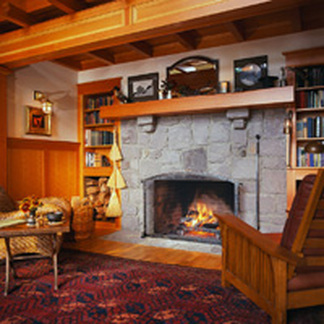
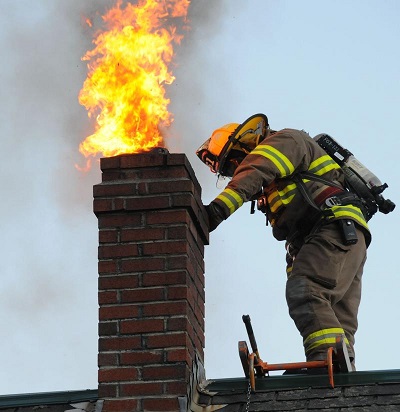
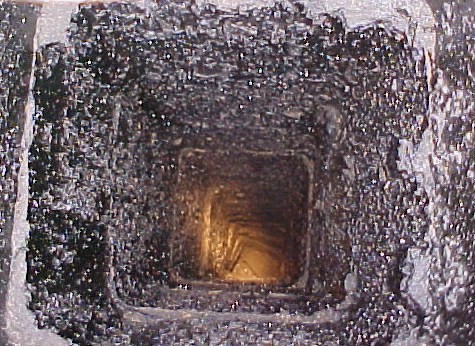
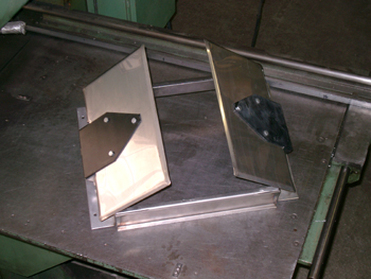
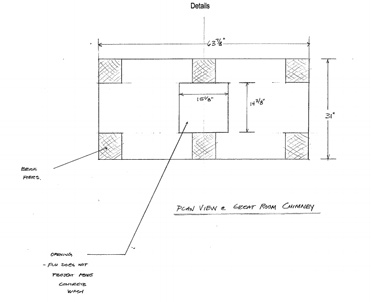
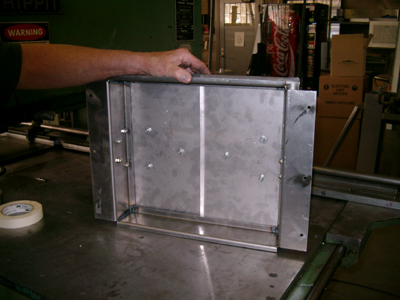
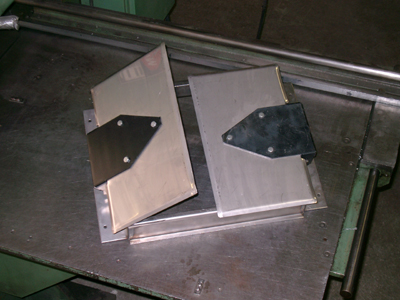
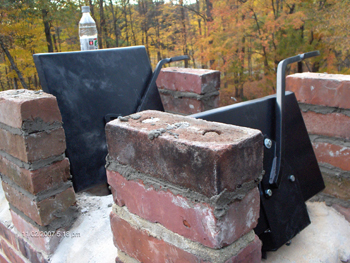
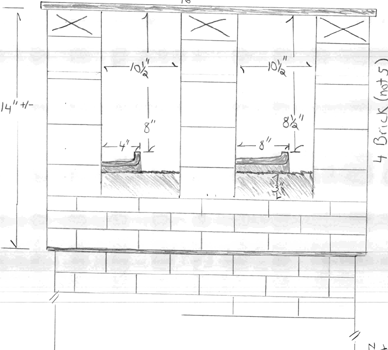
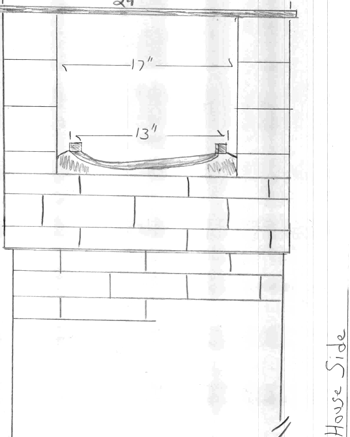
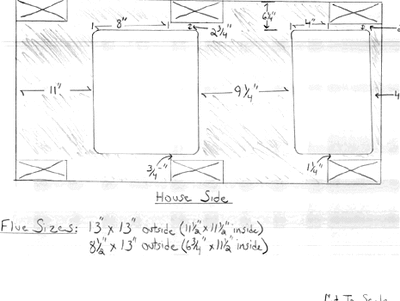
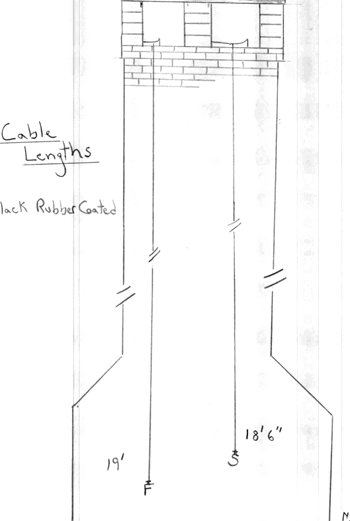
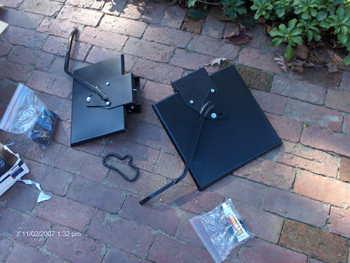
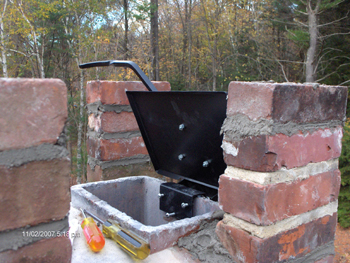
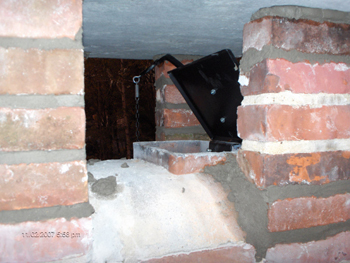
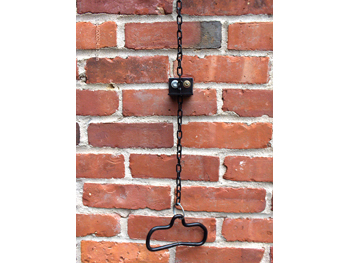
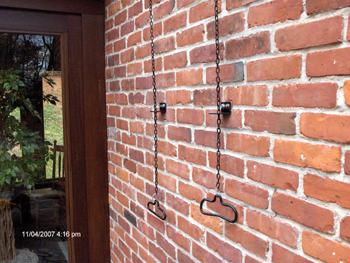
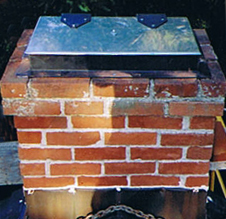
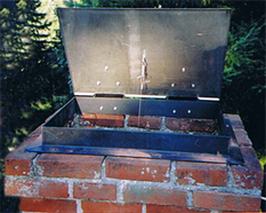
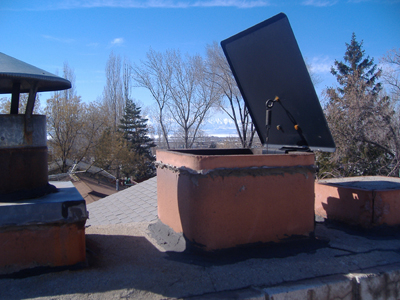
 RSS Feed
RSS Feed
